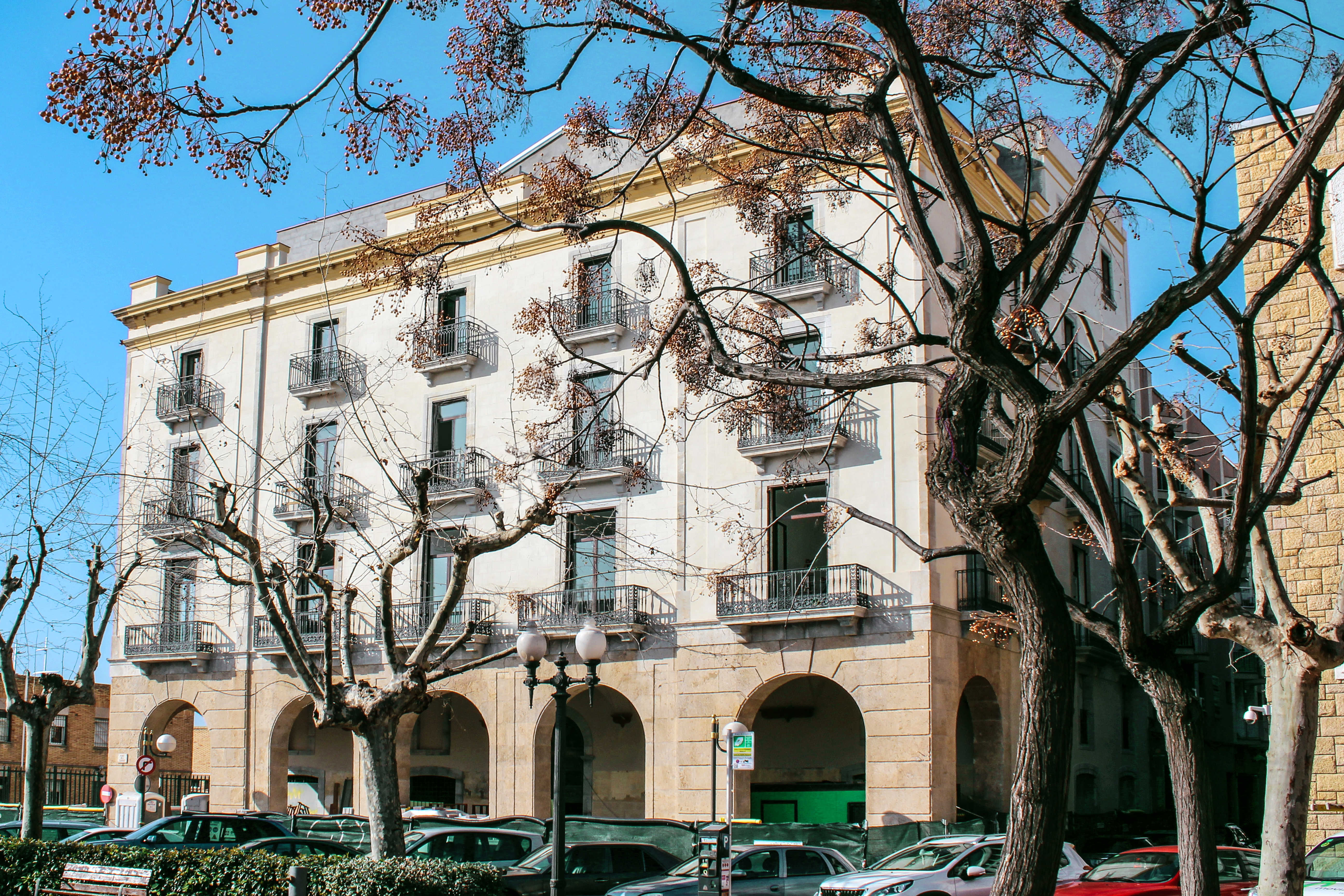Grupo Reside has rehabilitated the building of the old Customs House of Tarragona, converting it into 34 residential apartments and certifying the building with the BREEAM sustainability certification scheme.
The vision of the Reside Group is to go beyond the simple construction process, and aims to transfer added value to the real estate asset. The BREEAM® methodology means for Grupo Reside the possibility of reflecting its values of sustainability and environmental awareness in its real estate asset, and thus transmitting them to the people who are related to it throughout its useful life.
Zero Consulting has carried out the consulting of the building's sustainability in the areas of energy, materials and project management, as well as its certification under the BREEAM® ES Vivienda 2011 sustainability seal. We are very happy with the Very Good rating obtained and to be able to contribute to the environmental sustainability of the province of Tarragona, being this the first building certified with these characteristics.
During the planning, design, and building construction phases, we have closely collaborated with the developer (Grupo Reside), the design team (Josep Oliva Oliva, Oikosvia Arquitectura and Olga Poblet Sobrino) and the construction company (Garcia Riera) to conduct a thorough monitoring of the entire process to ensure the required certification levels are met, adhering to the deadlines and the assigned budget.
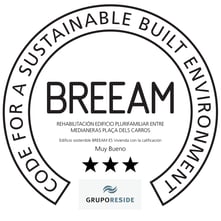
Environmental consulting: evaluated criteria
Alternative low-carbon emission technologies
It is as important to calculate the forecast of the building's energy consumption as to evaluate the energy consumption of all the facilities. To this end, a study of low carbon emission technology alternatives has been conducted, concluding that for the supply of DHW, the photovoltaic installation and thermal panels are the most suitable for the building. 34 photovoltaic modules and 6 thermal panels have been installed on the roof, allowing the generation of more than 60% of the building's consumption.
Life Cycle Analysis
Another key aspect of the sustainability strategy is the choice of materials used in the building as a whole. Among other parameters, the origin of their raw materials has been studied as well as the transformation processes, prioritizing those whose production is environmentally responsible and contributes to a positive social impact.
All this has made it possible to evaluate the global environmental impact of the building and select material manufacturers based on their environmental criteria, and of course, based on their economic cost. The economic viability study (Life Cycle Costing) allows us to study the economic profitability of the project based on the choice of energetically efficient materials, which contribute to the overall economic savings of the project.
Certification: strategies for improvement and energy savings
Energy
The use of windows with class 4 permeability, low-emissivity glass with an argon chamber, and the incorporation of a 6 cm mineral wool and plasterboard wall lining in the existing walls has resulted in a reduction in heating and cooling demand of 90% and 70% respectively.
Lighting
LED lighting has been chosen for both indoor and outdoor spaces. Additionally, presence sensors, natural lighting sensors, and astronomical clocks that control exterior lighting have been installed. The implementation of the whole provides a notable reduction in the switching on of lighting, which translates into great savings in consumption.
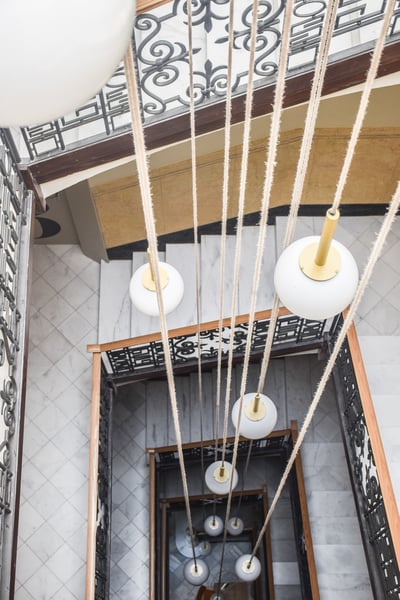
Water
Flow reducers have been installed in all taps and showers to achieve the low consumption flow rates required by the certification. The toilets are dual flush (4.5/3 litres per flush), and the washing machines and dishwashers with low consumption allow for water savings of more than 50%. Additionally, a monitoring system has been incorporated that allows tracking of consumption.
Ecology
Through the collaboration of a professional ecologist, the environmental impact of the building on the site has been studied and improved before, during, and after the construction works. In the inner courtyard of the building, native species from the area that only require rainwater have been planted, improving the biodiversity of the environment.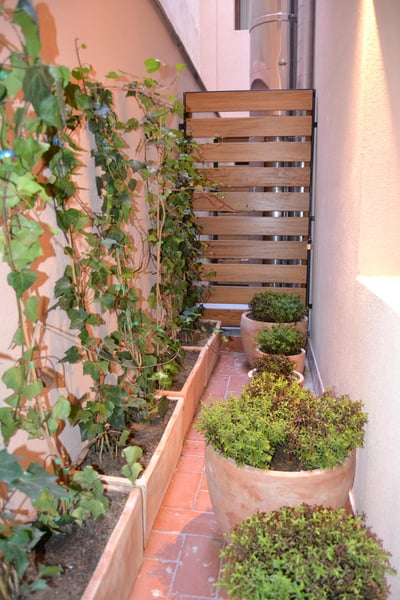
On-site monitoring
During the construction phase, environmental impacts and waste management were monitored through Zero Consulting's online monitoring platform. Throughout the construction, water consumption, fuel consumption, and waste valuation have been recorded.
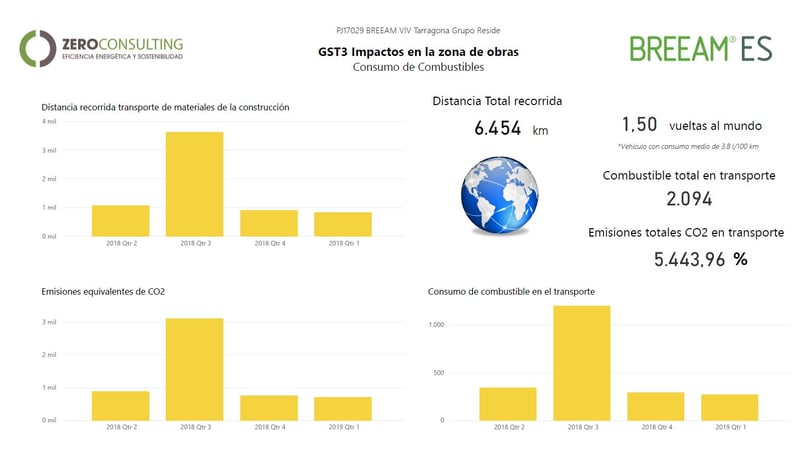
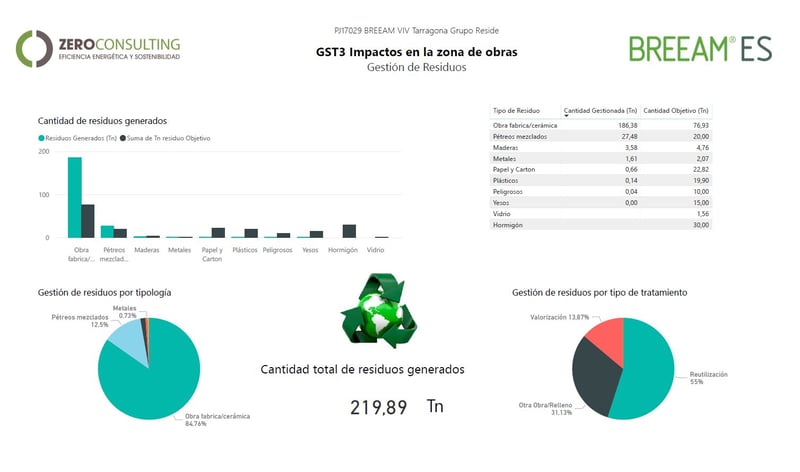
Throughout the entire project, the Zero Consulting team has gathered all the necessary evidence and managed the BREEAM certification process for the building in the project phase and in the finished building phase, achieving the objectives established from the outset.
BREEAM®(Building Research Establishment Environmental Assessment Method) is an internationally recognised method of assessing and certifying the sustainability of buildings. Since its launch in 1990, BREEAM® has certified more than 270,000 buildings and is now present in more than 63 countries around the world. Regardless of their location, the common denominator of these buildings is their planning, design, construction, and operation in accordance with the principles of best sustainability practices.
Zero Consulting is an organisation authorised by BREEAM® to carry out sustainability assessments and assessments of buildings. The assessments are verified by the certifier BREEAM® and our assessors have passed a specific training process in accordance with EN-17024.

